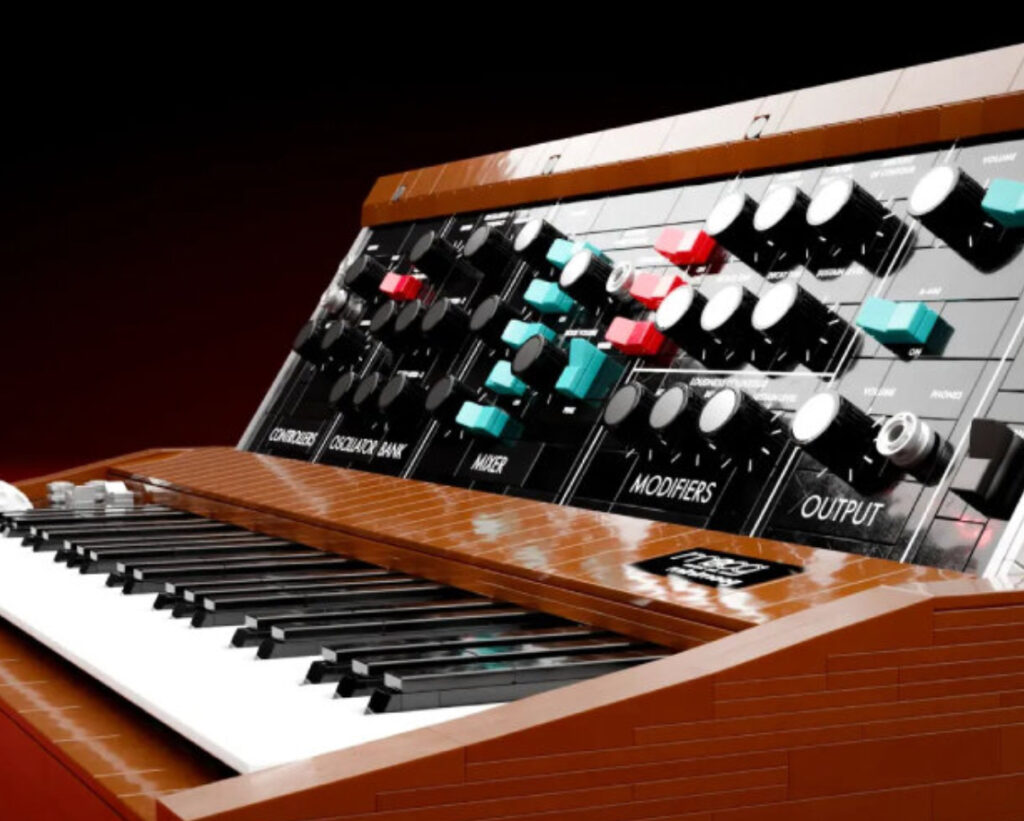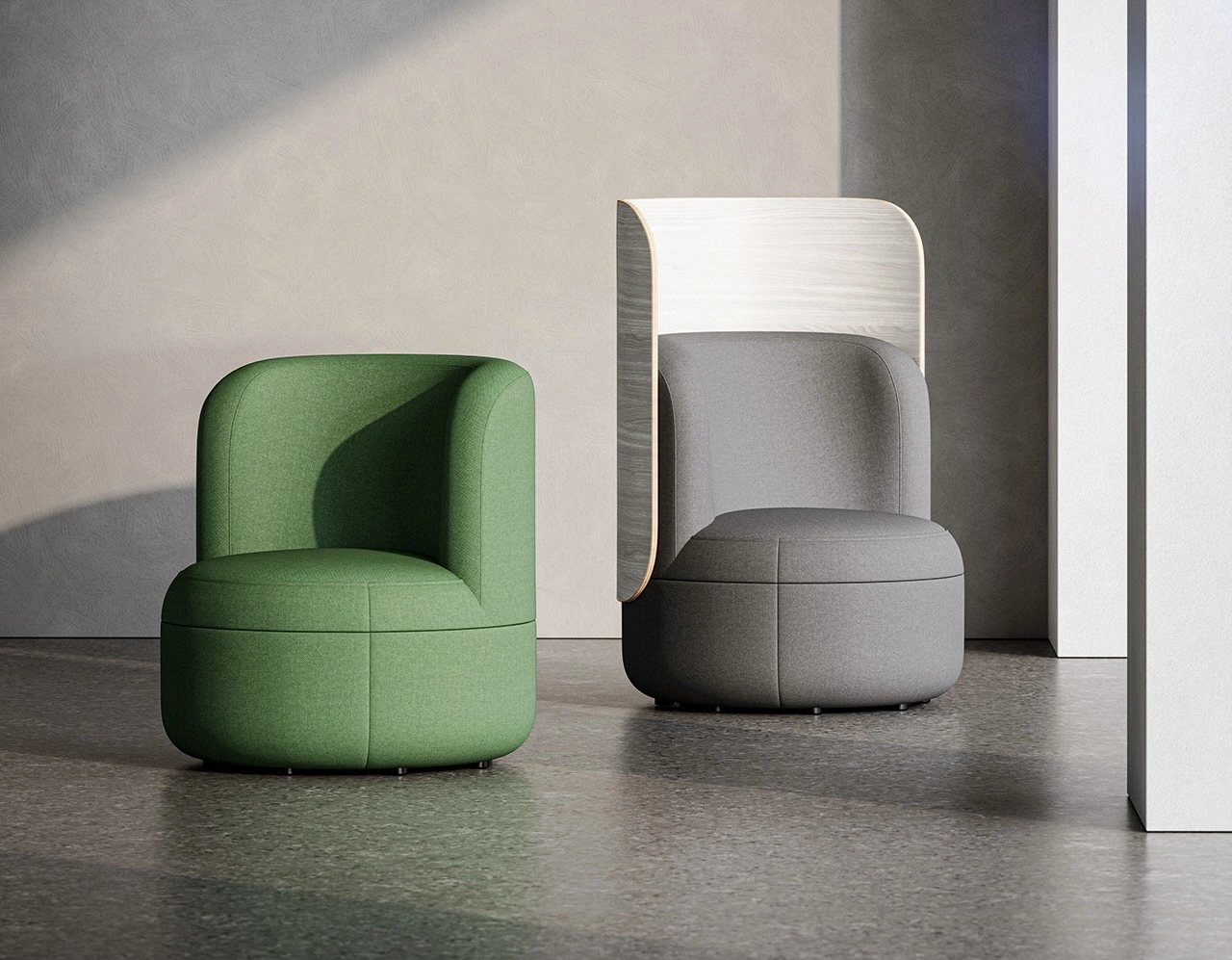In an extraordinary blend of music history and creative craftsmanship, LEGO enthusiast Eliot O’Brien has unveiled a remarkable 1:1 scale replica of the legendary Minimoog analog synthesizer, made entirely out of LEGO bricks. This meticulously designed model faithfully captures the essence of the 1970 synthesizer, which revolutionized electronic music and became an essential tool for countless musicians across various genres.
What sets O’Brien’s LEGO Minimoog apart is not just its striking resemblance to the original, but its functional features, including pushable keys, rotating knobs, and adjustable pitch wheels. While the model does not produce sound, it offers an immersive, hands-on experience, making it a must-have for both LEGO and music enthusiasts alike.
A Tribute to a Musical Icon
The Minimoog Model D, originally introduced in 1970, was a groundbreaking innovation that made synthesizers more accessible and portable. Prior to its release, synthesizers were bulky, complex machines primarily used in academic or professional studio settings. The Minimoog’s compact design and intuitive layout allowed musicians to take electronic music on the road, ultimately influencing artists such as Kraftwerk, Stevie Wonder, and Rick Wakeman.
By recreating this iconic instrument with LEGO, O’Brien pays homage to the Minimoog’s enduring legacy and its contribution to shaping modern music. The LEGO version meticulously replicates the synthesizer’s distinctive wooden casing, control panel layout, and retro aesthetic, ensuring that it appeals to both vintage synth lovers and LEGO collectors.
Functional LEGO Features
One of the most impressive aspects of the LEGO Minimoog is its interactive design, which goes beyond being a static display piece. The model features:
•Functional Keys: The LEGO rendition includes a set of pushable keys that mimic the real Minimoog’s layout, allowing users to simulate playing chords and melodies.
•Rotating Knobs: True to the original synthesizer, the LEGO model features knobs that can be turned, providing an authentic tactile experience reminiscent of adjusting oscillators and filters.
•Adjustable Pitch Wheels: The model incorporates pitch and modulation wheels, staying true to the original design’s expressive capabilities.
•Hinged Rear Panel: The LEGO Minimoog includes an opening rear control panel that reveals intricate internal details, replicating the complex circuitry of the real instrument.
Although the LEGO model does not generate sound, it serves as an educational tool for those wanting to understand the physical components of a synthesizer and how they interact to create electronic music.
LEGO Ideas Platform and Community Support
O’Brien’s creation has gained traction within the LEGO and music communities, having been submitted to the LEGO Ideas platform. This platform allows creators to showcase their designs and gather public support. If a project receives 10,000 votes, it is considered for official production by LEGO.
With the growing popularity of the LEGO Minimoog, there is hope that the set could become an official release, allowing music and LEGO fans worldwide to own a piece of musical history in brick form. Supporters can visit the LEGO Ideas website to cast their votes and help bring this innovative project to life.
The Intersection of LEGO and Music
The LEGO Minimoog highlights the exciting intersection between music and creative construction, showcasing the versatility of LEGO as a medium. In recent years, LEGO has expanded into various artistic and technical domains, with sets inspired by film, architecture, and even musical instruments such as the LEGO Grand Piano.
Projects like O’Brien’s Minimoog demonstrate how LEGO can be used not just for play but as a means of preserving cultural and artistic legacies. The attention to detail and the commitment to honoring the Minimoog’s design make it an inspiring project that bridges the worlds of engineering, music, and design.
Educational Value and Inspiration
Beyond being a collector’s item, the LEGO Minimoog serves as a valuable educational tool, introducing younger generations to the fundamentals of synthesizers and sound design. Aspiring musicians and engineers can explore the physical components of a synth in a tactile, engaging way—making it an ideal teaching aid for music educators and enthusiasts looking to break down complex concepts.
The model also encourages creativity by allowing users to imagine and explore their own interpretations of electronic music history. Whether for inspiration or as a functional model for classroom discussions, the LEGO Minimoog bridges the gap between hands-on learning and creative exploration.
The Minimoog’s Lasting Legacy
Since its debut in the 1970s, the Minimoog has remained one of the most influential synthesizers of all time. It has been used in countless genres, from progressive rock and funk to electronic dance music and hip-hop. The synthesizer’s rich analog sound, simple interface, and portability made it a favorite among legendary artists such as:
•Stevie Wonder: Who incorporated the Minimoog into his signature sound, pioneering its use in soul and R&B.
•Gary Numan: One of the earliest adopters in the electronic music scene, using it to create futuristic sounds.
•Daft Punk: Who drew inspiration from the Minimoog’s analog warmth in their electronic productions.
By recreating such an iconic instrument in LEGO form, O’Brien ensures that new generations are exposed to the Minimoog’s rich history and musical contributions.
Challenges and Design Process
Building a fully functional LEGO model of an analog synthesizer posed significant challenges for O’Brien. Achieving an accurate representation of the Minimoog’s distinctive wooden panels, control interfaces, and internal layout required extensive planning and creativity. Some of the hurdles faced during the design process included:
1.Finding the Right LEGO Pieces: O’Brien had to source specific bricks to accurately replicate the Minimoog’s unique textures and colors.
2.Engineering Moving Parts: Creating functional knobs and keys while maintaining structural integrity required inventive building techniques.
3.Staying True to Proportions: Ensuring that the 1:1 scale remained consistent while balancing aesthetics and functionality.
Despite these challenges, the final model stands as a testament to O’Brien’s skill and passion for both music and LEGO artistry.
Public Reception and Future Prospects
Since its unveiling, the LEGO Minimoog has received widespread praise from both the music and LEGO communities. Online forums and social media have been abuzz with admiration for the project, with many calling for LEGO to officially produce it as a collectible set.
If the project reaches the required number of votes on LEGO Ideas, it could potentially join the ranks of other music-inspired LEGO sets, such as the LEGO Fender Stratocaster and the LEGO Grand Piano.
With increasing demand for nostalgia-driven collectibles, the LEGO Minimoog is well-positioned to become a sought-after item among musicians, collectors, and LEGO enthusiasts.
Impression
The LEGO Minimoog analog synthesizer is more than just a creative tribute to an iconic musical instrument; it represents a fusion of art, design, and music history. Whether viewed as a collector’s item, an educational tool, or a piece of interactive art, the LEGO Minimoog stands as a remarkable example of how classic designs can be reimagined in new and exciting ways.
As O’Brien’s project continues to gain support on the LEGO Ideas platform, music and LEGO enthusiasts eagerly await the possibility of bringing this masterpiece into their homes. Whether you’re a musician, a LEGO fan, or simply someone who appreciates the rich history of electronic music, the LEGO Minimoog offers a delightful celebration of innovation and creativity.
No comments yet.








